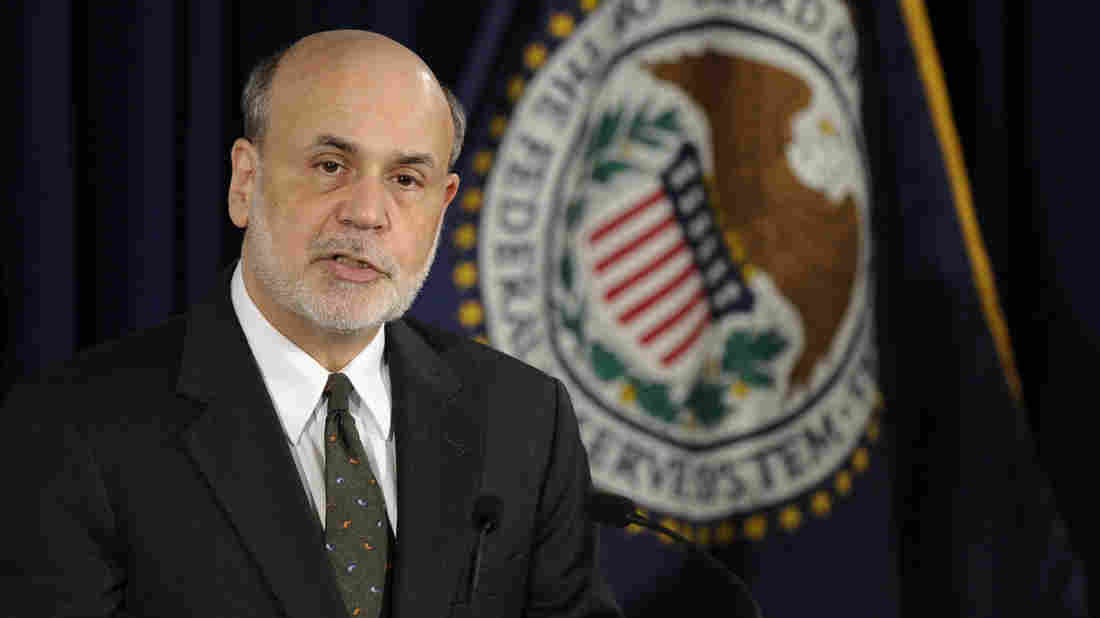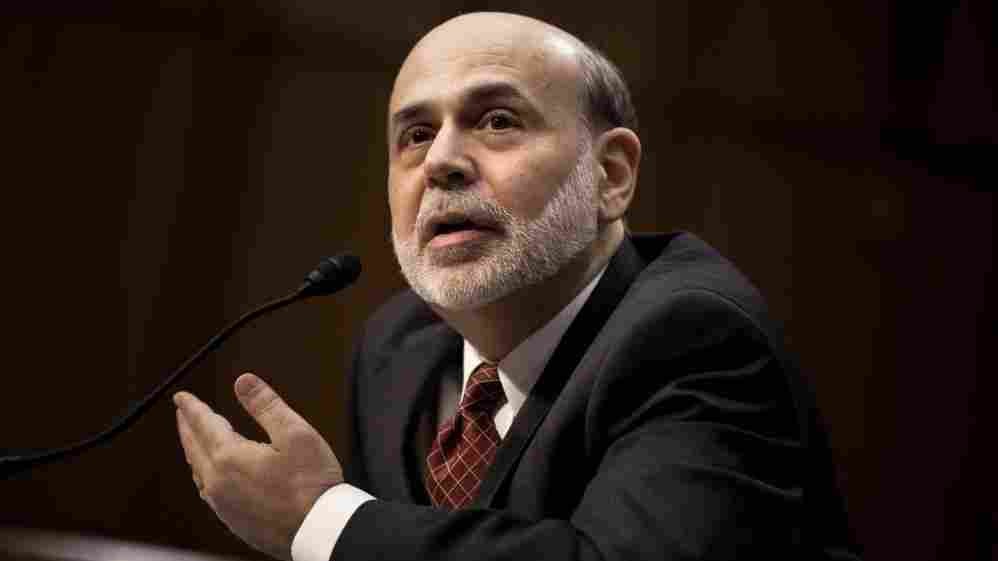What Is the Role of the Federal Reserve NPR
Post on: 14 Май, 2015 No Comment

Listener Q&A
It’s no easy task to keep up with all the intricacies of the housing crisis, the credit crunch and the rest of the economy’s doldrums. NPR’s Adam Davidson and former Federal Reserve governor Laurence Meyer answer listeners’ questions.
The Federal Reserve took dramatic measures over the weekend to reassure the increasingly anxious investment community, including negotiating the bargain-basement sale of Bear Stearns, one of Wall Street’s biggest and most storied banks. The Fed’s moves raise questions about just how deep the financial industry’s woes go — and what other banks might be at risk.
Here, a look at what happened and what it means for the markets:
What was the Fed’s role in the sale of Bear Stearns to JP Morgan?
The Fed extended JPMorgan Chase a $30 billion credit line to help it buy rival Bear Stearns, a firm with an 85-year history on Wall Street that was on the verge of collapsing due to losses in the mortgage market. JPMorgan is getting Bear Stearns for the rock-bottom price of about $2 a share — or about $236 million. That’s a stunningly low price when one considers that Bear Stearns’ shares were trading at $30 each on Friday, and that its company headquarters building in New York is valued at $1 billion by itself.
Why did Bear Stearns agree to be purchased for such a fire-sale price?
Bear Stearns really had no choice. The bank is facing an onslaught of rumors about its losses in the mortgage industry, and on Friday it reported some major liquidity problems — investors were pulling their money out and the bank was short on cash. The only way for Bear Stearns to keep doing business was to let itself be bought by another firm like JPMorgan. But the deal effectively wipes out most of Bear Stearns’ shareholder wealth, and it’s not clear whether it will win shareholders’ approval.
What about customers of Bear Stearns? Will their investments be affected?
Bear Stearns customers will become customers of JPMorgan Chase. Their accounts will transfer automatically; they don’t have to do anything, says Laurence Meyer, a former Federal Reserve governor.
What would have happened if the government had not stepped in and instead allowed Bear Stearns to go bankrupt?
Bear Stearns doesn’t just have its own assets — it serves as what’s called a counterparty, meaning it works as the middleman for billions of dollars in transactions. So, working people have retirement funds there, for example, and smaller banks and hedge funds can trade stocks or securities through Bear Stearns.
If the bank did go bankrupt, an unbelievably long and complex legal process would begin. Thousands of Bear Stearns customers — from individual retirees to massive hedge funds — would have huge amounts of money just frozen. Imagine how complicated a personal bankruptcy is and multiply that by tens of billions of dollars in assets. The Federal Reserve wanted to avoid that.
What other measures did the Fed take?
Perhaps the Fed’s most significant move over the weekend was the creation of a new program to give emergency loans directly to the 20 largest so-called primary dealers. These are investment banks that do business directly with the Fed and which purchase the majority of Treasury securities.
In addition, the Fed lowered the discount-lending rate — that’s the rate which it charges banks for very short-term loans — by a quarter-point, to 3.25, on Sunday. It followed that on Tuesday with a cut of three-quarters of a percentage point to another key interest rate, the federal funds rate.
Why did the Fed feel the need to take such dramatic action?
It’s an indication of just how precarious things are in the financial markets. The fear is that if an investment giant like Bear Stearns fails, it could spark a run on other banks with sizable exposure to troubled credit markets, creating a domino effect of defaults.

Investment banks like Bear Stearns are the lifeblood of capital markets, providing the cash flow that keeps economic gears turning. They facilitate short-term loans to businesses, raise money for corporate expansions and IPOs and assist the trading of securities. Without them, financial markets would grind to a halt.
Does the Fed’s intervention mean that things might be worse on Wall Street than they appear?
It certainly feeds those suspicions. The current credit crisis is largely being fueled by fear and uncertainty. Because they are not traded on a daily basis, mortgage-backed securities are difficult to value even in the best of times. Now that the mortgage market is in free fall, it’s almost impossible to gauge just how much bad debt these banks have been left holding. That has made banks extremely nervous about making even short-term loans to each other.
Are other banks in serious trouble?
Yes, and everyone is asking who’s most at risk. Some of the names mentioned most frequently are UBS and Lehman Brothers, both of which have a lot of exposure to subprime and mortgage-related securities.
Why do the markets feel comfortable with the Fed actions to help JPMorgan buy Bear Stearns, but not with government action to provide relief to homeowners who cannot pay their mortgages?
Actually, the Fed’s action is quite controversial. People do worry about moral hazard. although I think that Bear Stearns was significantly punished, says former Fed governor Meyer. The Fed has taken credit risk onto its portfolio that it wasn’t really set up to do, but global investment banks are really too big to simply go out of business, he adds.
But when it comes to homeowners, it’s important to understand that there are actions the Federal Reserve can take, and actions that the administration and Congress would have to handle. Helping out homeowners is up to the latter. Again, there’s moral hazard issues as to whether you should do that, Meyer says. But the problem is so significant here. I think you could reasonably argue that it is a time for [the Treasury Department] and the administration to put some taxpayers’ money at risk here, in order to reduce the risks. and help homeowners.
With reporting by NPR’s Jim Zarroli, Chris Arnold, Adam Davidson and Uri Berliner














